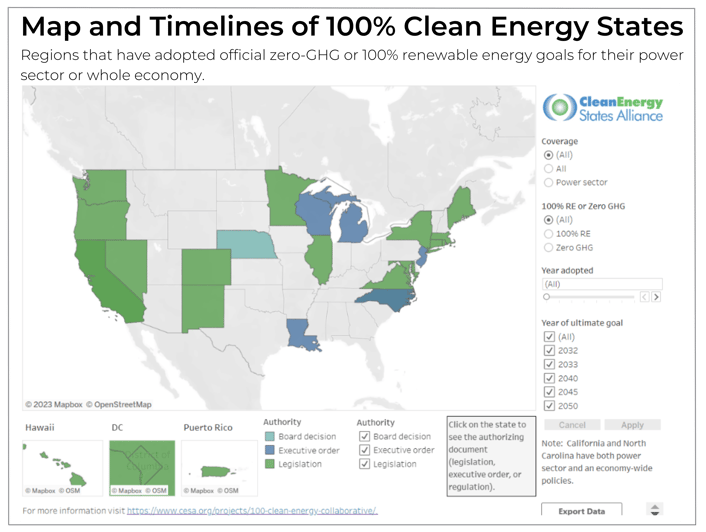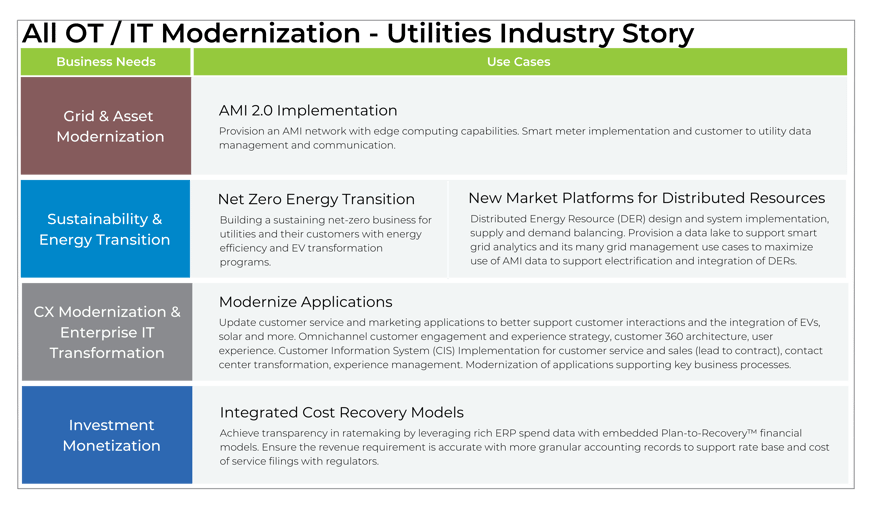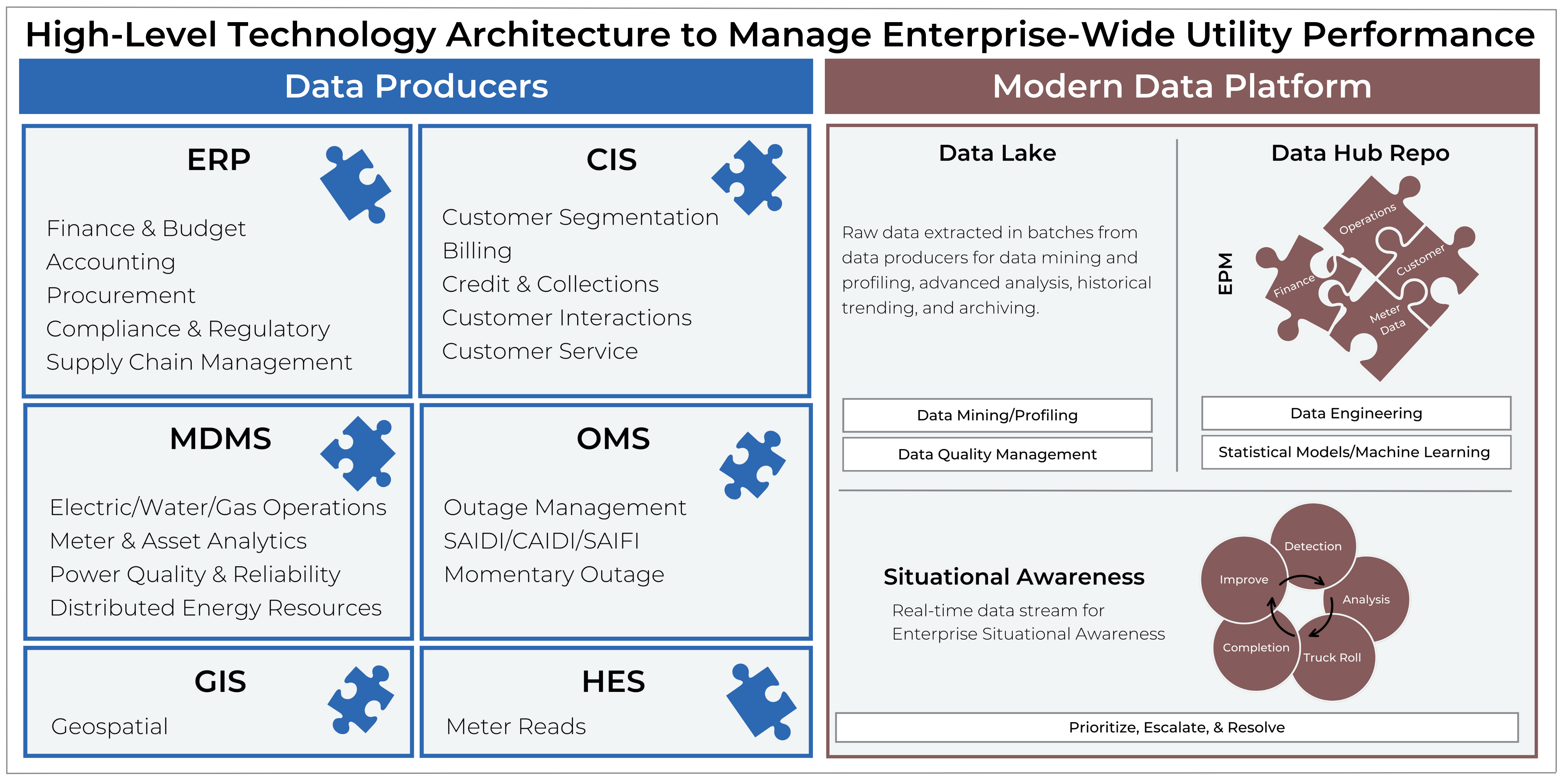
April 4, 2023
Ease the Path to Net Zero with More Customer Choice and a Quick Utility Recovery Model

Chris Bui
Managing Director, AMI and Smart Metering
As more and more states heed global warning signs and set aggressive decarbonization goals, the energy transition is accelerating. In fact, there are currently 22 states, plus the District of Columbia and Puerto Rico, with 100% clean energy goals. (Source: Clean Energy States Alliance – see figure below.)
 Never has there been a time when the goals of utilities, customers, regulators and politicians were so aligned. Yet, these aggressive decarbonization goals will bring about seismic disruptions both to the ways that companies do their business and the ways that people live their lives. “Easing the shock” of this transition requires close collaboration between the utility and its customers, vendors, and regulators — especially now, when higher costs due to inflation and other dynamic factors are creating tension. It also requires upgrades to existing IT and OT systems to ease the transition and to maximize other benefits associated with this change, including better customer relationships.
Never has there been a time when the goals of utilities, customers, regulators and politicians were so aligned. Yet, these aggressive decarbonization goals will bring about seismic disruptions both to the ways that companies do their business and the ways that people live their lives. “Easing the shock” of this transition requires close collaboration between the utility and its customers, vendors, and regulators — especially now, when higher costs due to inflation and other dynamic factors are creating tension. It also requires upgrades to existing IT and OT systems to ease the transition and to maximize other benefits associated with this change, including better customer relationships.
While utilities have a big task to fully convert to renewable generation, our customers will play a critical role. Aside from evangelizing environmental protection, they must make their own investments that help utilities lighten the burden of full conversion to renewable generation in time to meet mandated deadlines. In turn, we utilities must invest in systems that will make it easier for our customers to do their part.
But this is more than an opportunity to better engage our customers. It’s an opportunity to transition your utility to its future operating model. One that takes advantage of all the data now available, applies it to create insight across the enterprise, and enables you to quickly capitalize your investments for recovery.
After all, a successful business model empowers customers and utilities. To get there, utilities must build the following into their roadmaps:
- Update the CIS platform to better receive and process the AMI data
- Update customer service and marketing applications to better support customer choice – from interactions to the integration of EVs, solar and battery storage
- Provision a data lake to support smart grid analytics and its many grid management use cases
- Simplify and restructure and finance processes to maximize the return on investment associated with these big investments
1. Update Your CIS Platform to Include AMI Data
For energy transition success, you need to roll out programs that incentivize customers and facilitate conversion to EVs, PVs and the deployment of battery storage. At the same time, utility commissions will be rolling out rates that provide more real-time pricing signals and cost-control options. These programs and associated pricing will need to be supported by more frequent usage information updates to facilitate timely decisions and provide feedback on customer behavior. The success of these programs in helping to meet sustainability objectives will depend in part upon the ability to get AMI data quickly to where it needs to be to support relevant and timely decisions and drive customer and societal value. This requires a fast and reliable AMI network with some of the latest distributed intelligence capabilities, but it also requires an updated CIS platform with the capability to host this AMI data and support these emerging use cases.
With AMI 1.0, the retrieval of granular data was sluggish, and that data tended to be stranded within meter data management solutions that required complex integration to derive real business value. To support today’s needs, data must be decentralized and orchestrated to drive customer value. Because many customer-service-related use cases reside within the CIS, we should seek to merge that AMI data with the commercial platform — that is, within the CIS, where we can tie technology benefits to the customer programs that drive energy transition.
Companies like FortisAlberta in Calgary, Canada, are leveraging embedded CIS solutions to reduce the integration complexity that has hindered the realization of corporate goals — from sustainability to the elevation of the customer’s overall experience with the utility.

And then there is the matter of the CIS platform itself. Adopting an evolved mode of customer interaction powered by AMI data requires an updated and scalable digital core. That digital core is crucial for connecting the AMI infrastructure with the customer to drive customer value, and for connecting that infrastructure with the utility’s enterprise management functions.
2. Update customer service and marketing applications to better support customer choice
If customer participation in the energy transition is crucial, then the marketing of the programs that solicit customer participation in the transition is every bit as important, as is the ability to efficiently enroll those customers in important transitional programs.
To help propel your utility toward achieving net zero-carbon goals, high adoption volumes are a must, and that cannot be accommodated via the call center alone.
Utilities can achieve high program enrollment via a combination of modern call center and customer self-service channels. Those channels (especially self-service) must also accommodate more frequent and complex interactions, which are inherent in today’s business model.
Companies like DTE and First Energy are modernizing their customer experience solutions in preparation for the net-zero transition. Both utilities serve states that have established zero-carbon goals. DTE offers its customers new products and expanded self-service capabilities using a cloud solution. Customers can self-enroll in new or existing commodity-based services and products, including time of use rates, Peak Time Savings, Dynamic Peak Pricing and other demand response-related offerings.
Targeted campaigns and self-service enrollment play an important role in helping these utilities achieve their aggressive net-zero goals.
3. Provision a Data Lake to Support Smart Grid Analytics and Use Cases
In addition to embedding AMI data within the CIS, utilities can also leverage modern cloud analytics capabilities and machine learning to contextualize that data to support longer-term needs in energy control, power distribution, and other utility functions. But technology proliferation and complexity can counteract potential benefits of the data generated if the data is left in its silo. You can avoid this possibility by adopting an enterprise analytics strategy that delivers simplification, solution scalability, and accessibility of the data as its primary goals.
The utility CTO should seek to eliminate technology and data silos, and instead seek to enable disparate teams who lack the capability to derive the insights that fuel innovation in energy transition, by providing easy access to a common source of both AMI / Smart Grid data and commercial data, intuitive data mining tools, and data science expertise. For example, consider how the groups charged with implementing distributed energy resource management, power quality management, reliability, and infrastructure management will leverage AMI data. These are energy transition imperatives and the associated programs that analytics can address.
The diagram below shows how core business systems provide specific reports and solutions required to operate a successful utility. By combining data from these programs into a centralized modern data platform, utilities can unlock new opportunities to drive energy transition.

4. Monetizing the Investment (This section is for your CFO)
The reality is that the way to a green energy future has to be financed. Capital is needed from utility shareholders and bond investors to fund investments in renewable infrastructure.
Recording, tracking and recovering on investments in renewable assets is challenging conventional utility fixed asset processes. During an era of increasing interest rates and inflationary pressures, utilities should look for capitalization approaches that leverage fast, efficient and integrated ERP data to recover cash outlays. Earning a return on invested capital is even more important now to maintain a positive cash flow, as persistent inflation raises the cost of building new assets while concurrently exhausting existing cash from retained earnings due to the loss of purchasing power.
If you consolidate all financial processes in the ERP—creating a single source of truth—you will get the accuracy, transparency and speed needed to proactively manage the recovery process. Plus, you will earn a higher ROI on the ERP investment. Your CFO will love being able to track capital expenditures in more detail with more transparency during the accounting from construction to plant in service where additions can start to earn a return and improve cash flow from a more accurate revenue requirement. Every dollar of recovery matters more now in this high-interest rate, high-inflation era where spending on renewable energy investments is increasing exponentially.
The last mile of recovery is the meter-to-cash business process. You need to translate your revenue requirement into an efficient measurement, billing, and collection model that delivers on the last mile of recover to get cash back into the bank quickly, efficiently, and with a high level of customer satisfaction.
Summary
Industry disruption linked to the environment and sustainability isn’t going away. On top of a worrisome inflation trend and global instability, consumers’ demand for renewals, self-reliance, and choice will only grow. Your customers will look to you for answers, as will regulators.
The good news is, there is a path for you to “advance the ball” on all fronts: give customers more choice and control over escalating costs, support energy independence, and move toward a zero-carbon future while maintaining grid reliability, gaining regulator support, and earning your authorized rate of return.
Utegration can help you confidently chart a course for success to create the modern business model needed for this new environment.
We invite you to schedule some time with us to discuss a strategy and a tailored roadmap to get you there. Click HERE to schedule some time together.